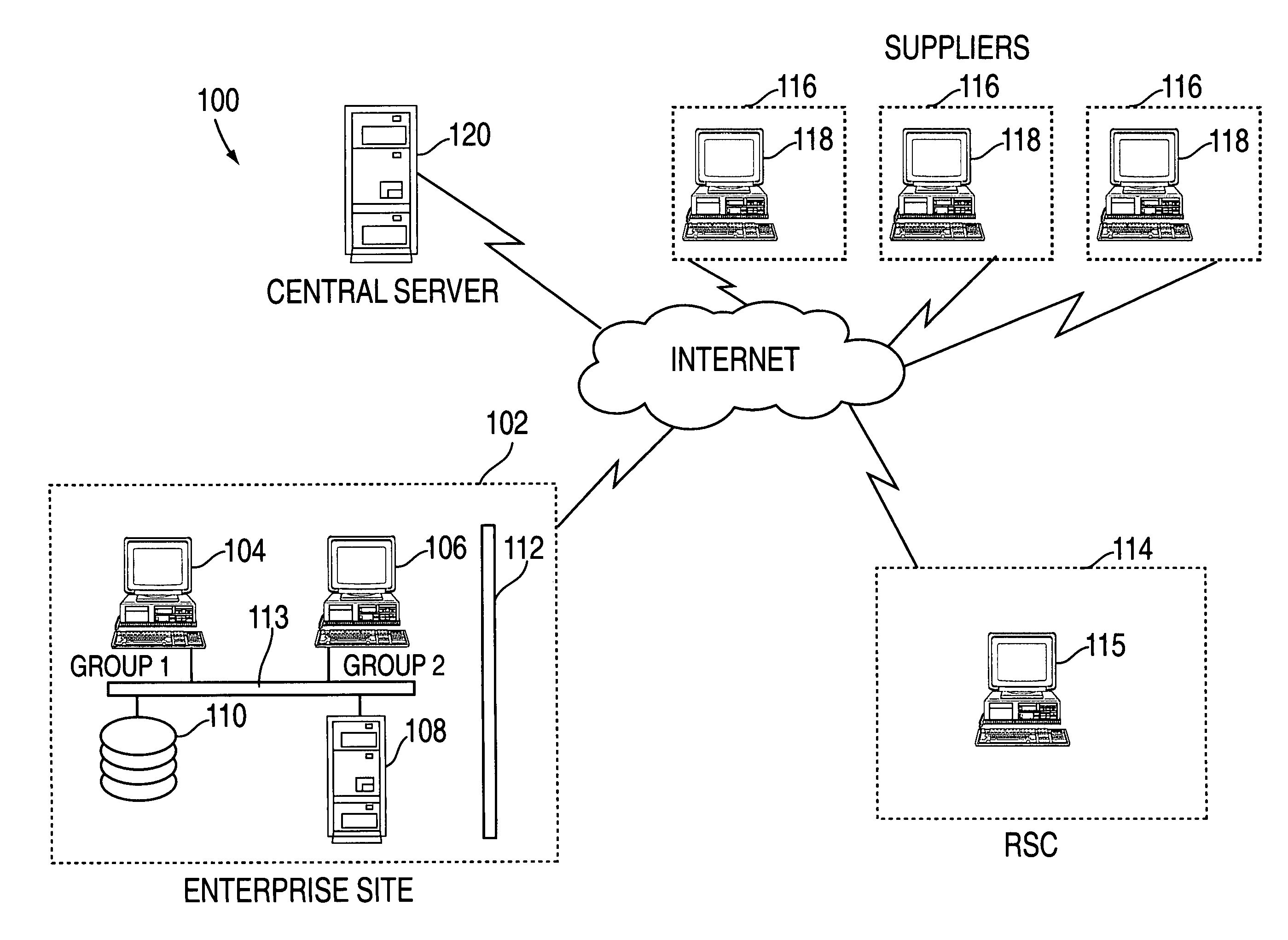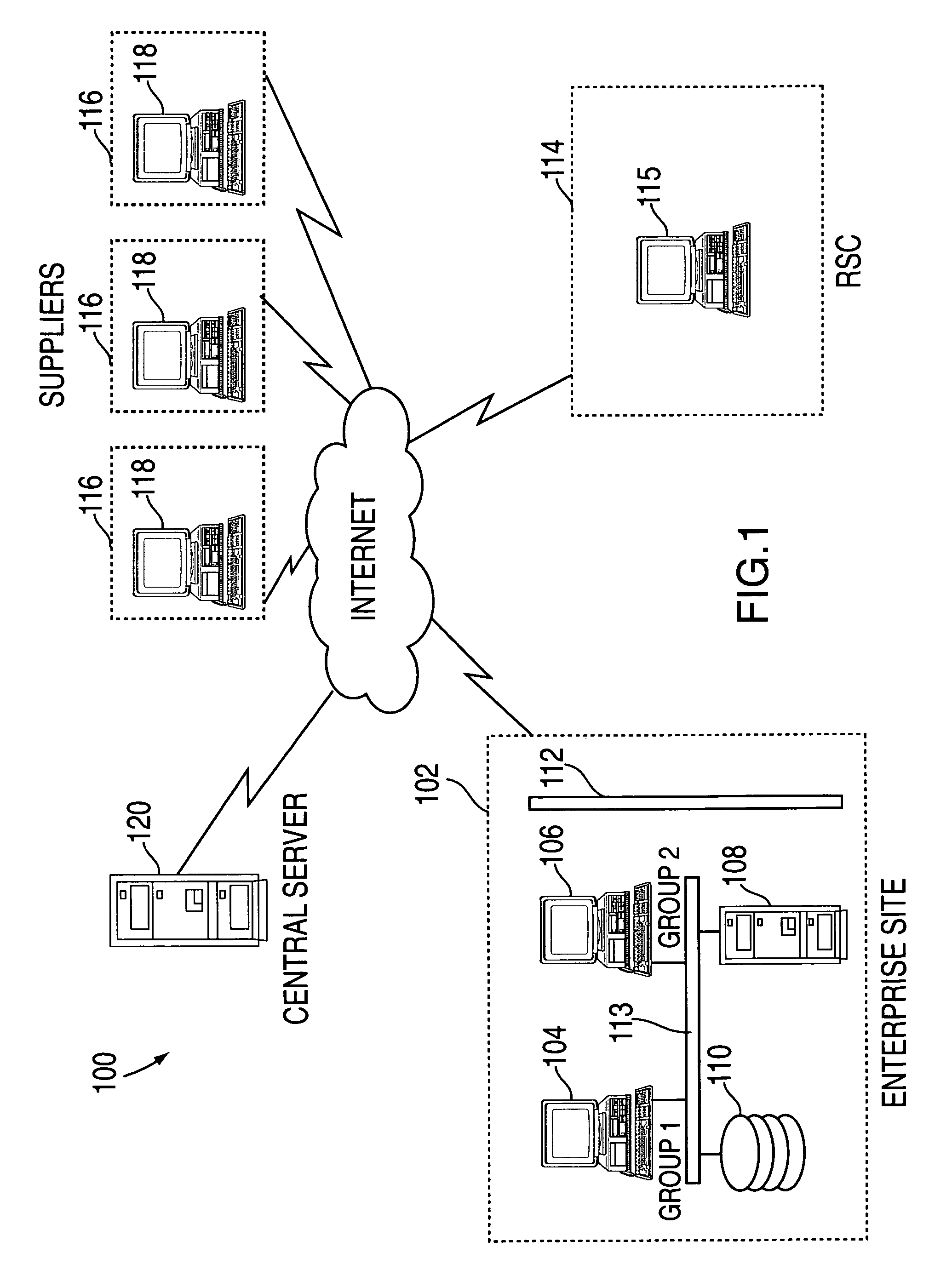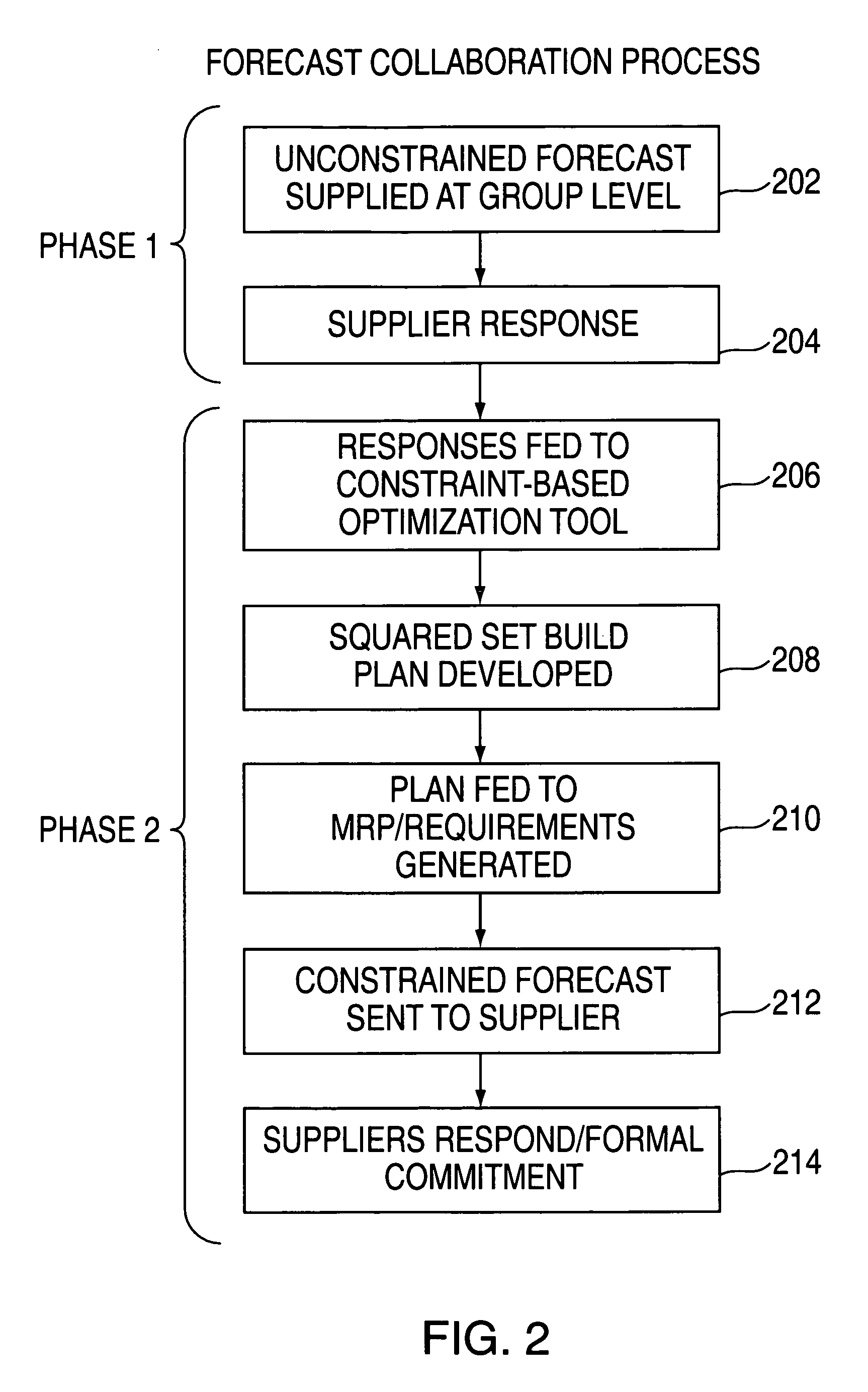Network-based supply chain management method
a supply chain management and network technology, applied in the field of inventory management, can solve the problems of affecting inventory levels, increasing the risk of asset loss, and jeopardizing the ability of a company to do business, and achieve the effect of facilitating the delivery of inventory items
- Summary
- Abstract
- Description
- Claims
- Application Information
AI Technical Summary
Benefits of technology
Problems solved by technology
Method used
Image
Examples
Embodiment Construction
[0015]In an exemplary embodiment, the supplier collaboration tool is implemented via a computer network system such as that depicted in FIG. 1. System 100 includes an enterprise site 102 which, for purposes of illustration, represents one of a plurality of electronics manufacturing facilities belonging to a business enterprise, although it will be understood that additional sites may be included in system 100 in order to realize the advantages of the invention. The business enterprise of FIG. 1 may be a large manufacturing company with manufacturing sites located all over the globe. Thus, enterprise site 102 represents one of the facilities operated by the business enterprise. Enterprise site 102 comprises divisions or groups which share requirements for common materials with similar divisions or groups from other sites associated with the business enterprise. Enterprise site 102 includes a client system 104 which represents a first manufacturing division (also referred to as group ...
PUM
 Login to View More
Login to View More Abstract
Description
Claims
Application Information
 Login to View More
Login to View More - R&D
- Intellectual Property
- Life Sciences
- Materials
- Tech Scout
- Unparalleled Data Quality
- Higher Quality Content
- 60% Fewer Hallucinations
Browse by: Latest US Patents, China's latest patents, Technical Efficacy Thesaurus, Application Domain, Technology Topic, Popular Technical Reports.
© 2025 PatSnap. All rights reserved.Legal|Privacy policy|Modern Slavery Act Transparency Statement|Sitemap|About US| Contact US: help@patsnap.com



